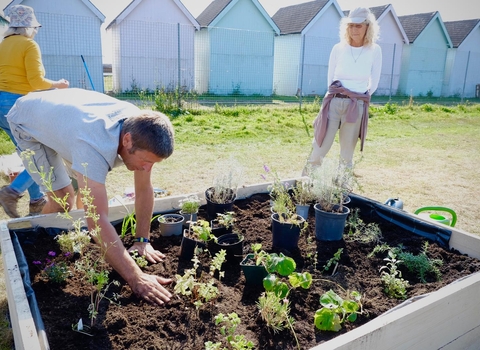Hi I'm Nat. I have been interested in wildlife and conservation since I was very young, as the hobbies that I enjoy bring frequent interaction with the natural environment. I am a keen surfer, and like to support various marine conservation efforts and I am also a bee-keeper.
My first close encounters with bees involved holding the smoker for my dad whilst he inspected the hives. Peering at the frames filled with bees, and as the seasons progressed - honey, fascinated me and sparked an interest. I was then keen to develop my bee-keeping skills, and did so, as part of my Duke of Edinburgh Bronze award in 2018/19. Whilst looking after our honey bees, I have learnt what they need to thrive and this has led to an appreciation of all pollinators, their importance and the challenges they currently face.


